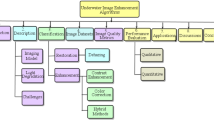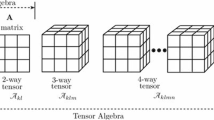Abstract
Many recently proposed robust two-dimensional principal component analysis (2DPCA) approaches can suppress the sensitivity to outliers in images to some extent. However, most approaches can neither perfectly minimize the reconstruction error nor use fewer coefficients to conveniently represent image information. To alleviate these deficiencies, we developed a novel robust 2DPCA approach for underwater image analysis, called l2,p-sequential bilateral-2DPCA (l2,p-SB-2DPCA). The outstanding advantages of l2,p-SB-2DPCA are as follows. First, our model uses the l2,p-norm as the metric criterion of the objective function, which not only improves the robustness of the algorithm but also preserves the basic properties of 2DPCA. Second, we establish the relationship between the variance of the projection data and the corresponding input data in both the row and column directions, which makes the model achieve good recognition ability while using fewer coefficients and further improves the interpretability of the model. Finally, to obtain the optimal value of l2,p-SB-2DPCA, we present an iterative algorithm. The experimental results show that the proposed algorithm achieves the best performance on three underwater datasets and one extended face dataset compared with other robust 2DPCA approaches.
















Similar content being viewed by others
References
Lu H, Li Y, Uemura T, Kim H, Serikawa S (2018) Low illumination underwater light field images reconstruction using deep convolutional neural networks. Future Gener Comput Syst 82:142–148
Zhao D, Zhou F, Jiang R, Liu X, Chen Y (2019) Design of low-complexity 3-D underwater imaging system with sparse planar arrays. IEEE Trans Instrum Meas 68(10):3418–3432
Turk M, Pentland A (1991) Eigenfaces for recognition. J Cogn Neurosci 3(1):71–86
Turk M, Pentland A (1991) Face recognition using eigenfaces. In: Proceedings of the IEEE computer society conference on computer vision and pattern recognition, pp 586–591
Du Q, Chang C (2001) A linear constrained distance-based discriminant analysis for hyperspectral image classification. Pattern Recognit 34(2):361–373
He X, Niyogi P (2004) Locality preserving projections. In: Proceedings of the advances in neural information processing systems, pp 153–160
Kokiopoulou E, Saad Y (2007) Orthogonal neighborhood preserving projections: a projection-based dimensionality reduction technique. IEEE Trans Pattern Anal Mach Intell 29(12):2143–2156
Yang J, Zhang D, Frangi AF, Yang J-Y (2004) Two-dimensional PCA: a new approach to appearance-based face representation and recognition. IEEE Trans Pattern Anal Mach Intell 26(1):131–137
Yang J, Zhang D, Yong X, Yang J-Y (2005) Two-dimensional discriminant transform for face recognition. Pattern Recognit 38(7):1125–1129
Zhang H, Wu QMJ, Chow TWS, Zhao M (2012) A two-dimensional neighborhood preserving projection for appearance-based face recognition. Pattern Recognit 45(5):1866–1876
Kong H, Li X, Wang L, Teoh EK, Wang JG, Venkateswarlu R (2005) Generalized 2D principal component analysis. In: Proceedings of the international joint conference on neural networks, Montreal, Canada, vol 1, pp 108–113
Zhang D, Zhou Z (2005) (2D)2PCA: two-directional two-dimensional PCA for efficient face representation and recognition. Neurocomputing 69(1–3):224–231
Noushath S, Kumar GH, Shivakumara P (2006) (2D)(2)LDA: an efficient approach for face recognition. Pattern Recognit 39(7):1396–1400
Yang WK, Sun CY, Ricanek K (2012) Sequential row-column 2DPCA for face recognition. Neural Comput Appl 21(7):1729–1735
Zhu Q, Xu Y (2013) Multi-directional two-dimensional PCA with matching score level fusion for face recognition. Neural Comput Appl 23(1):169–174
Zhang F, Yang J, Qian J, Xu Y (2015) Nuclear norm-based 2-DPCA for extracting features from images. IEEE Trans Neural Netw Learn Syst 26(10):2247–2260
Hou J, Wang Y, Zuo J (2013) A novel matrix-based method for face recognition. Neural Comput Appl 23(7–8):2261–2265
Ke Q, Kanade T (2005) Robust L1 norm factorization in the presence of outliers and missing data by alternative convex programming. In: Proceedings of the IEEE computer society conference on computer vision and pattern recognition, vol 1, pp 739–746
Kwak N (2008) Principal component analysis based on L1-norm maximization. IEEE Trans Pattern Anal Mach Intell 30(9):1672–1680
Nie F, Huang H, Ding C, Luo D, Wang H (2011) Robust principal component analysis with non-greedy l1-norm maximization. In: Proceedings of the international joint conference on artificial intelligence, pp 1433–1438
Li X, Pang Y, Yuan Y (2010) L1-norm-based 2DPCA. IEEE Trans Syst Man Cybern Part B-Cybern 40(4):1170–1175
Wang H, Wang J (2013) 2DPCA with L1-norm for simultaneously robust and sparse modelling. Neural Netw 46(10):190–198
Wang R, Nie F, Yang X, Gao F, Yao M (2015) Robust 2DPCA with non-greedy L1-norm maximization for image analysis. IEEE Trans Cybern 45(5):1108–1112
Pang Y, Li X, Yuan Y (2010) Robust tensor analysis with L1-norm. IEEE Trans Circuits Syst Video Technol 20(2):172–178
Wang Q, Gao Q, Gao X, Nie F (2017) Optimal mean two-dimensional principal component analysis with F-norm minimization. Pattern Recognit 68:286–294
Wang Q, Gao Q, Gao X, Nie F (2018) L2, p-norm based PCA for image recognition. IEEE Trans Image Process 27(3):1336–1346
Gao Q, Xu S, Chen F, Ding C, Gao X, Li Y (2019) R-1-2-DPCA and face recognition. IEEE Trans Cybern 49(4):1212–1223
Zhou S, Zhang D (2019) Bilateral angle 2DPCA for face recognition. IEEE Signal Process Lett 26(2):317–321
Ding C, Zhou D, He X, Zha H (2006) R1-PCA: rotational invariant L1-norm principal component analysis for robust subspace factorization. In: Proceedings of the 23rd international conference on machine learning, pp 281–288
Li T, Li M, Gao Q, Xie D (2017) F-norm distance metric based robust 2DPCA and face recognition. Neural Netw 94:204–211
Gao Q, Ma L, Liu Y, Gao X, Nie F (2018) Angle 2DPCA: a new formulation for 2DPCA. IEEE Trans Cybern 48(5):1672–1678
Shao KT, Lin J, Wu CH, Yeh HM, Cheng TY (2012) A dataset from bottom trawl survey around Taiwan. ZooKeys 198:103–109
Li Y, Lu H, Li J, Li X, Li Y, Serikawa S (2016) Underwater image de-scattering and classification by deep neural network. Comput Elect Eng 54:68–77
Liu Y, Gao Q, Miao S, Gao X, Nie F, Li Y (2017) A non-greedy algorithm for l1-norm for LDA. IEEE Trans Image Process 26(2):684–695
Wang Q, Gao Q, Gao X, Nie F (2017) Angle principal component analysis. Proceedings of the international joint conference on artificial intelligence 2:1201–1207
Li Y, Lu H, Li J, Li X, Li Y, Serikawa S (2016) Underwater image de-scattering and classification by deep neural network. Comput Electr Eng 54:68–77
Xu J, Bi P, Du X, Li J (2019) Generalized robust PCA: a new distance metric method for underwater target recognition. IEEE Access 7:51952–51964
Sim T, Baker S, Bsat M (2002) The CMU pose, illumination, and expression (PIE) database. In: Proceedings of the IEEE international conference on automatic face gesture recognition, pp 53–58
Lee J-M, Qin SJ, Lee I-B (2007) Fault detection of non-linear processes using kernel independent component analysis. Can J Chem Eng 85(4):526–536
Acknowledgments
This work is supported by the Best Sea Assembly and the Control Technology Institute. The authors would like to thank Jian Xu, Xue Du, Juan Li and Guangjia Chen for providing assistance with the underwater experiments. This work is also supported in part by the National Natural Science Foundation of China under Grants 51609046 and 51709062 and in part by Research Funds for the Underwater Vehicle Technology Key Laboratory of China under Grants 614221502061701 and 6142215180107.
Author information
Authors and Affiliations
Corresponding author
Ethics declarations
Conflict of interest
We declare that we do not have any commercial or associative interest that represents a conflict of interest in connection with the work submitted.
Additional information
Publisher's Note
Springer Nature remains neutral with regard to jurisdictional claims in published maps and institutional affiliations.
Rights and permissions
About this article
Cite this article
Bi, P., Xu, J., Du, X. et al. l2,p-norm sequential bilateral 2DPCA: a novel robust technology for underwater image classification and representation. Neural Comput & Applic 32, 17027–17041 (2020). https://doi.org/10.1007/s00521-020-04936-1
Received:
Accepted:
Published:
Issue Date:
DOI: https://doi.org/10.1007/s00521-020-04936-1




